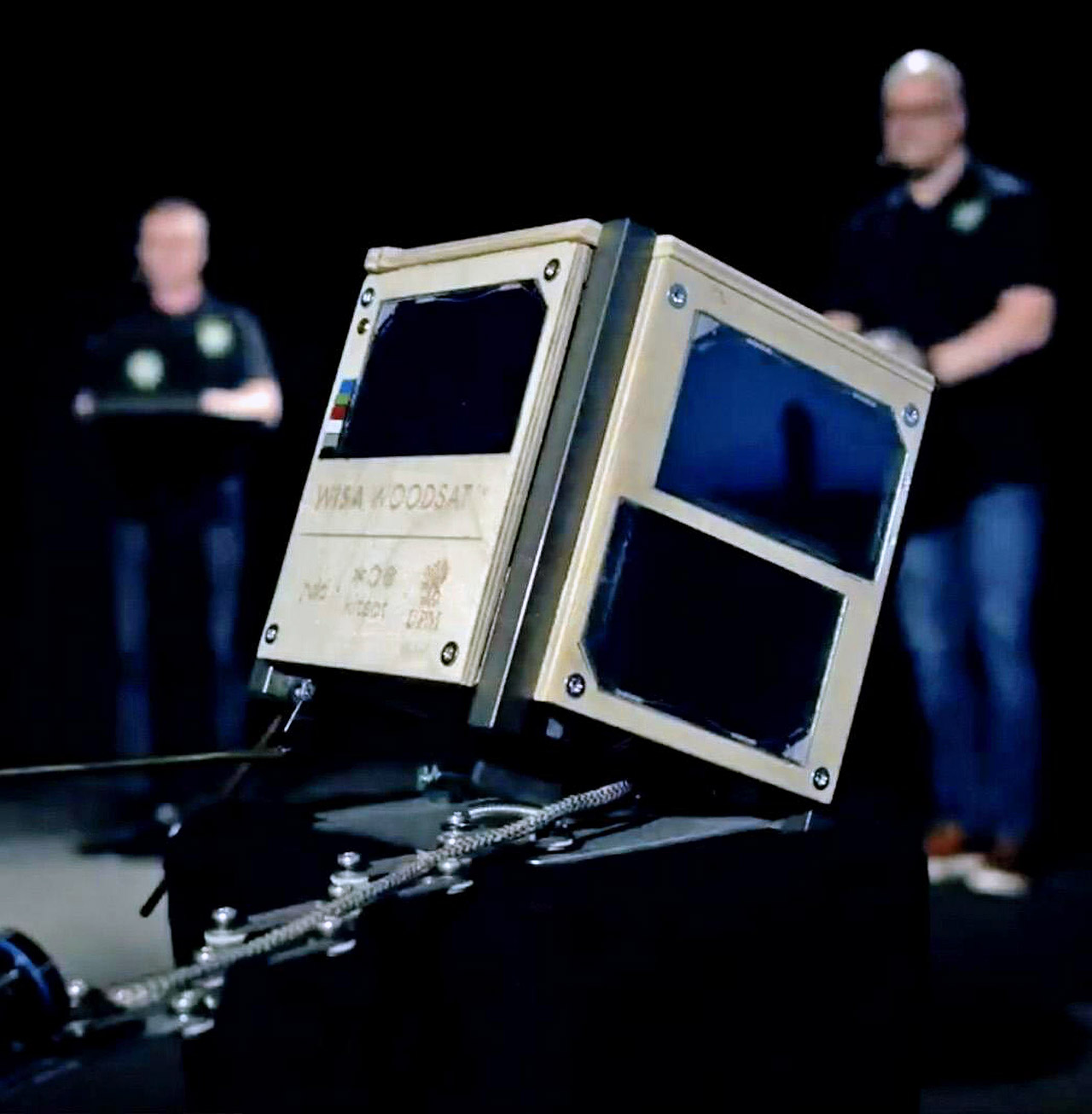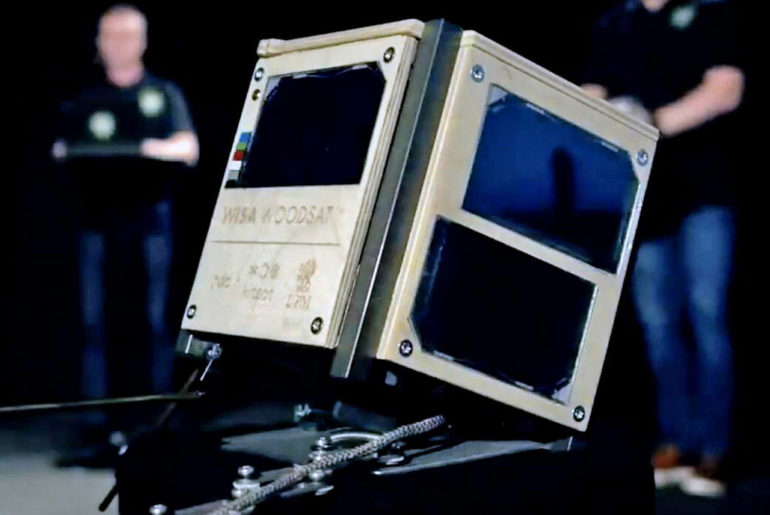
WISA Woodsat is essentially a 10x10x10 cm ‘CubeSat’, which is a type of nanosatellite made from standardized boxes, but with surface panels made from plywood. The only non-wooden external parts are corner aluminum rails used for its deployment into space, along with a metal selfie stick. Weighing just 2.2-pounds, it uses a specially coated plywood, called WISA, for its surface panels, and the mission aims to test the durability of this construction.
The satellite will be equipped with a pair of onboard cameras and an extended on a selfie stick to look back at the plywood as well as take pictures to see how it is behaving – such as color changes, cracks, etc. Aside from the cameras and ESA-donated sensor suite, Woodsat is also transporting an amateur radio payload that allows amateurs to relay radio signals and images around the globe. All you need to downlink data from this ‘LoRa’ radio link is to purchase ‘ground station’ costing as little as €10 ($12 USD). It’s set to launch before the end of this year.
- POWERFUL TELESCOPE FOR ASTRONOMY BEGINNERS: The Celestron AstroMaster 130EQ Newtonian reflector is ideal the telescope for beginners. It features...
- NEWTONIAN REFLECTOR OPTICAL DESIGN: With a large, 130mm aperture, the AstroMaster 130EQ can gather enough light to see our Solar System and beyond....
- EASY TO SET UP AND USE: This is a great telescope for kids and adults to use together. It features a manual German Equatorial mount for smooth and...
The main difference is that ordinary plywood is too humid for space uses, so we place our wood in a thermal vacuum chamber to dry it out. Then we also perform atomic layer deposition, adding a very thin aluminium oxide layer – typically used to encapsulate electronics. This should minimise any unwanted vapours from the wood, known as ‘outgassing’ in the space field, while also protecting against the erosive effects of atomic oxygen. We’ll also be testing other varnishes and lacquers on some sections of the wood,” said Woodsat chief engineer and Arctic Astronatics co-founder Samuli Nyman.




